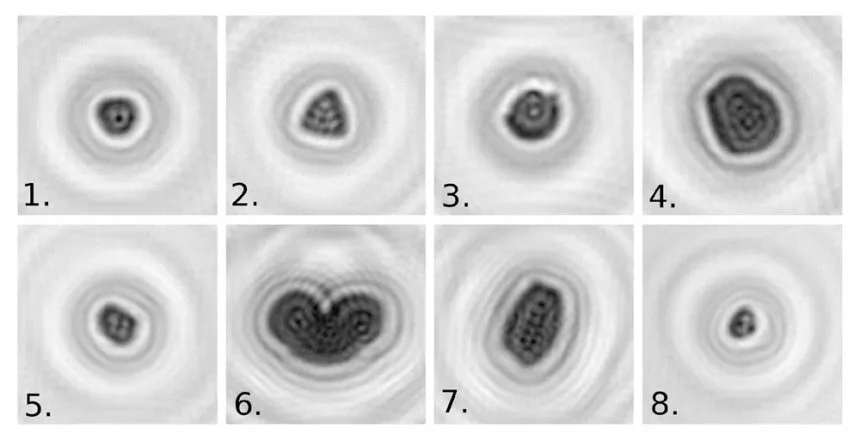We present the first validation of the Swisens Poleno, currently the only operational automatic pollen monitoring system based on digital holography. The device provides in-flight images of all coarse aerosols, and here we develop a two-step classification algorithm that uses these images to identify a range of pollen taxa. Deterministic criteria based on the shape of the particle are applied to initially distinguish between intact pollen grains and other coarse particulate matter. This first level of discrimination identifies pollen with an accuracy of 96 %. Thereafter, individual pollen taxa are recognized using supervised learning techniques. The algorithm is trained using data obtained by inserting known pollen types into the device, and out of eight pollen taxa six can be identified with an accuracy of above 90 %. In addition to the ability to correctly identify aerosols, an automatic pollen monitoring system needs to be able to correctly determine particle concentrations. To further verify the device, controlled chamber experiments using polystyrene latex beads were performed. This provided reference aerosols with traceable particle size and number concentrations in order to ensure particle size and sampling volume were correctly characterized.
Sauvageat, E., Zeder, Y., Auderset, K., Calpini, B., Clot, B., Crouzy, B., Konzelmann, T., Lieberherr, G., Tummon, F., and Vasilatou, K.: Real-time pollen monitoring using digital holography, Atmos. Meas. Tech., 13, 1539–1550, https://doi.org/10.5194/amt-13-1539-2020

